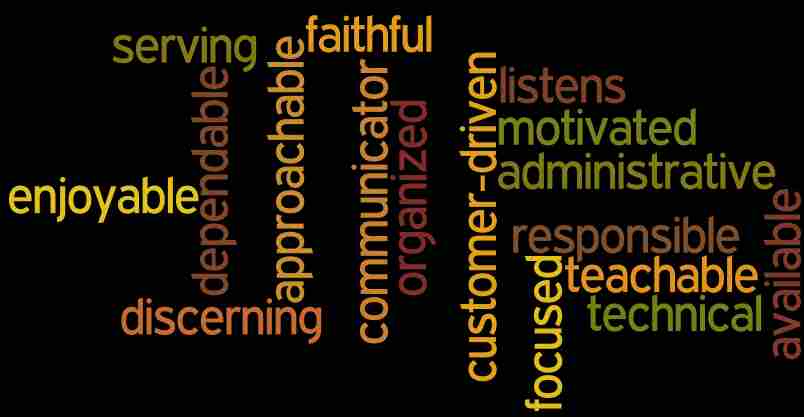
These past several weeks, we have discussed two principle responsibilities of leadership: selecting people to join our team, and routinely evaluating each team member’s performance going forward from the date of hire.
We are highlighting eight key characteristics for selection and evaluation of personnel. These attributes consist of 5 character qualities: Available, Faithful, Teachable, Enjoyable, Responsible; and 3 technical capabilities: Administrative, Communication, and Technical skills. In a previous installment, we discussed the first three attributes: Available, Faithful, and Teachable (click to read each previous summary).
Today we are providing a bit more detail on the fourth attribute: Enjoyable.
This characteristic regards a person’s team-interaction and leadership style: Does the person get along well with co-workers and communicate well in a team setting?
A person who is enjoyable will always consider their role in a specific context: they are a member of a larger work-group; they have a unique opportunity to contribute positively as a crucial player – but they remain well-aware that they are not the only member of the team; therefore they demonstrate a style of interaction that promotes good-will among the other members of the team.
The term enjoyable also evaluates the characteristic of being a “servant-leader.” An enjoyable person will seek to serve both the customer and their co-workers. They will demonstrate a service-oriented style of initiative, modeling mission-first behavior with everyone they encounter in the performance of their responsibilities.
Enjoyable: a service-oriented person who gets along well in a team setting.
A person who demonstrates this characteristic, together with the other 7 criteria, can be harnessed like nuclear fission and deployed effectively to rapidly advance-the-ball of the company’s core mission and objectives!
In the weeks ahead we will continue the discussion of the remaining attributes and technical capabilities listed above. We have found that this comprehensive set of metrics continues to constitute a very effective and yet simple methodology for assessing candidates for employment and then, for those who are hired, evaluating their on-going performance.
